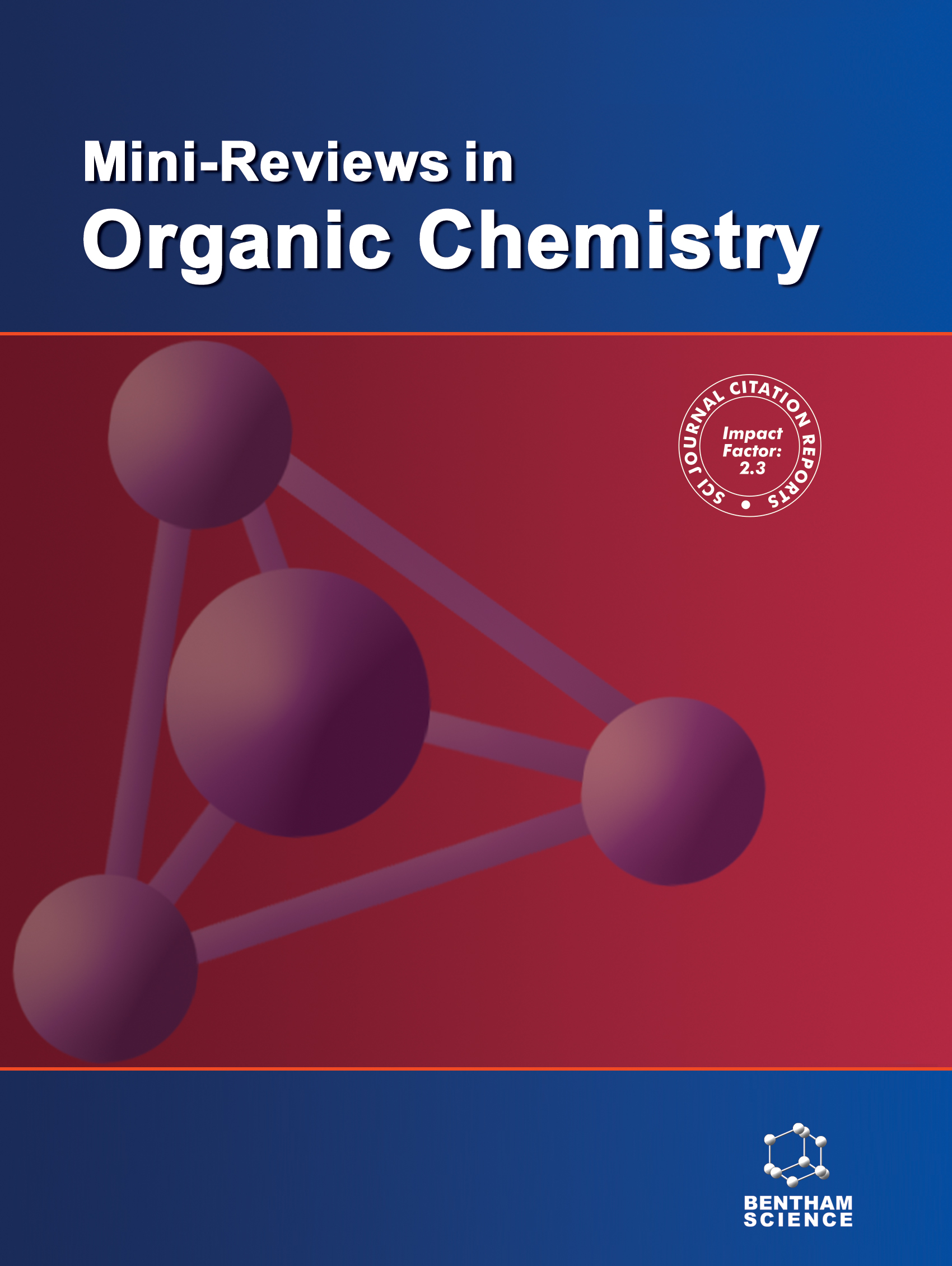- Home
- A-Z Publications
- Mini-Reviews in Organic Chemistry
- Previous Issues
- Volume 11, Issue 1, 2014
Mini-Reviews in Organic Chemistry - Volume 11, Issue 1, 2014
Volume 11, Issue 1, 2014
-
-
Snake Venom Proteins: Development into Antimicrobial and Wound Healing Agents
More LessInfectious diseases are a significant cause of morbidity and mortality worldwide, accounting for approximately 50% of all deaths in tropical countries and as much as 20% of deaths in the USA. The emergence of multi-drug resistant (MDR) strains makes the risk of these infections even more threatening and an important public health problem thereby increasing need of new agents for fighting pathogens. In this review, Read More
-
-
-
Purification and Characterization of Venom Components as Source for Antibiotics
More LessAuthors: Leidy Johana Vargas Munoz and Sebastian Estrada-GomezThe extensive use of antibiotics in medicine, food industry, and agriculture has led to a frequent emergence of multidrug-resistant bacteria, which creates an urgent need for new antibiotics. It is now widely recognized that venom proteins could play a promising role against multidrug-resistant bacteria. Different proteins with antibacterial activity have been characterized from the venoms of snakes, spiders and scorpions in the l Read More
-
-
-
Structural, Functional and Therapeutic Aspects of Snake Venom Metalloproteinases
More LessSnake venoms are rich sources of metalloproteinases that are of biological interest due to their diverse molecular diversity and selective therapeutic applications. Snake venoms metalloproteinases (SVMPs) belong to the MEROPS peptidase family M12B or reprolysin subfamily, which are consisted of four major domains include a reprolysin catalytic domain, a disintegrin domain, a reprolysin family propeptide domain a Read More
-
-
-
Therapeutic Use of Snake Venom Components: A Voyage from Ancient to Modern India
More LessAuthors: Payel Bhattacharjee and Debasish BhattacharyyaIt is a time tested phenomenon that in spite of deadly toxins in snake venoms, they are used for curing certain ailments of human suffering. Historically this application appears to co-evolve in many countries where India has significant contribution. Before independence, few British surgeons and naturalists documented the profile of snakes in India and investigated their venoms. With the advancement of technology, Read More
-
-
-
Microwave-Assisted Synthesis of Benzo-fused Seven-membered Azaheterocycles
More LessAuthors: Rajeev Sakhuja, Kiran Bajaj, S. M. Abdul Shakoor and Anil KumarThe use of microwave energy in chemical reactions has revolutionized the field of heterocyclic chemistry in the past two decades. Synergy of microwave methodology with reactions performed on support media and/or in the absence of solvent constitutes an environmentally clean technique, that offers tremendous advantages such as clean chemistry, reduction in reaction times, improved yields, and applicability to Read More
-
-
-
Aqua Mediated Synthesis of Spirocyclic Compounds
More LessAuthors: Pankaj Khanna, Siva S. Panda, Leena Khanna and Subhash C. JainSpirocyclic scaffolds are embedded in many biologically active natural and synthetic compounds. Efforts have been made time to time to develop new and better methodologies for the preparation of spirocyclic compounds. Noteworthy advantages were observed during the course of our study on “in water” synthesis of spirocyclic compounds. The established advantages of using water as a solvent in reactions are: water is the Read More
-
-
-
Titanium Catalyzed Enantioselective Oxidation of Thioethers with Hydrogen Peroxide
More LessCatalytic asymmetric oxidation of prochiral sulfides has been a challenging goal for years, which reflects the importance of sulfinyl group as a chiral controller in many organic transformations, as well as the existence of natural and synthetic biologically active products that need a sulfinyl group with a defined stereoconfiguration. 30 years ago, owing to the milestone discoveries of Kagan and Modena, titanium-dialkyltartrate/alkyl Read More
-
-
-
Green Trends in Mannich Reaction
More LessAuthors: W. Sreevalli, G. Ramachandran, W. Madhuri and Kulathu Iyer SathiyanarayananThe reflection of green chemistry for the synthesis of a wide range of compounds via multi-component reaction systems is discussed in this paper. It also describes the most interesting, atom-economic Mannich and Mannich type reactions, their processes via green methods, solvents, green solvents, solvent effects, catalysts, catalyst effects, selectivity, kinetics, etc. They are indeed environmentally and ecologically benign.
-
Volumes & issues
-
Volume 22 (2025)
-
Volume 21 (2024)
-
Volume 20 (2023)
-
Volume 19 (2022)
-
Volume 18 (2021)
-
Volume 17 (2020)
-
Volume 16 (2019)
-
Volume 15 (2018)
-
Volume 14 (2017)
-
Volume 13 (2016)
-
Volume 12 (2015)
-
Volume 11 (2014)
-
Volume 10 (2013)
-
Volume 9 (2012)
-
Volume 8 (2011)
-
Volume 7 (2010)
-
Volume 6 (2009)
-
Volume 5 (2008)
-
Volume 4 (2007)
-
Volume 3 (2006)
-
Volume 2 (2005)
-
Volume 1 (2004)
Most Read This Month
Article
content/journals/mroc
Journal
10
5
false
en


